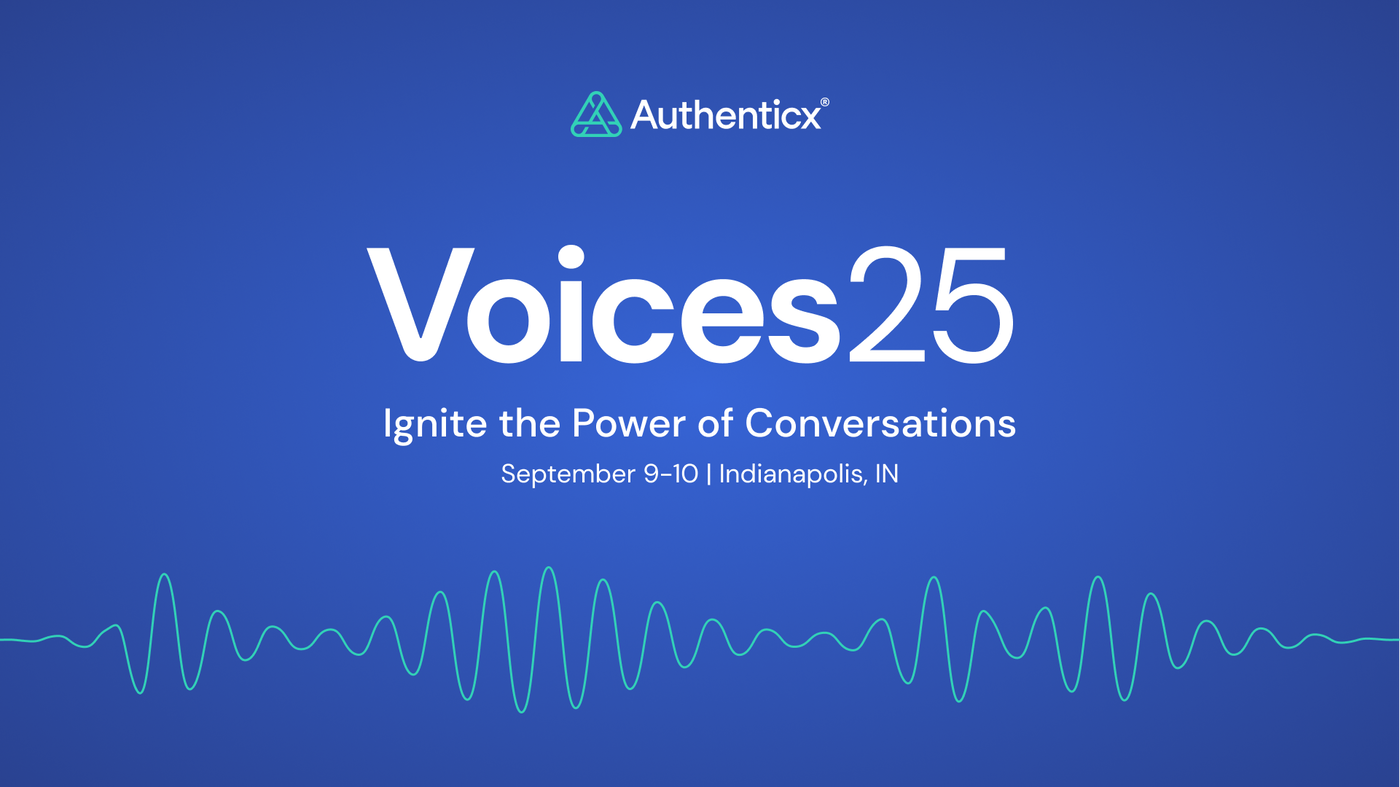
CEO and Founder Amy Brown recently joined a webinar panel to discuss the power of voice technology in customer experience. Presented by Deepgram and Opus Research, Amy joined Dan Miller, Founder & Senior Researcher at Opus Research, and Shadi Baqleh, Chief Operating Officer of Deepgram, for an engaging discussion on the power of voice in a session titled The Importance of Voice Technology for Customer Experiences.
In Part 2 of the series, we joined Deepgram, Opus Research, and Tethr to continue the discussion around The Future of Voice Technology in Customer Experience.
This 2-part panel discussed why and how the analysis of spoken words is becoming a critical source for better understanding customer intent and employee response. The series discussed how CX companies are using voice technologies to really understand their customers and what the future holds for voice and CX.
One driving force behind voice technology adoption is the increased accuracy of tools as well as the speed to value proposition. Listening directly to customer voices can give near-immediate feedback on the reality of the customer journey, revealing both points of friction and areas of success, which provides opportunities for quick iterations and key decision-making.
6 Key Webinar Takeaways
1. Expand Scope of ROI
Navigating and convincing upper management on the importance of investing in customer experience can prove challenging. The panelists discussed that by investing in listening, organizations are directly impacting their profitability (a common barrier when discussing use case with leadership). Customer voices hold enormous value in driving organizational success. It becomes a matter of expanding the lens of what defines ROI and drives profitability. Take into account the list below and consider how each piece plays a critical role in determining strategic growth.
Listening can help:
- Measure percentage of waste and friction
- Highlight indicators of attrition
- Identify brand value statements
- Predict sources of retention
2. Voice Enhances Digital Investment
Digital and voice technologies complement each other. Together these data sources help find the most compelling story and offer context around ‘why’ problems may be occurring. Voices are a strong market research tool that help unearth pockets of evidence and examples of what customers are experiencing. Additionally, the panel discussed how tonality can share a lot in ways of emotion and intention. It’s hard to unhear segments of customers going through a painful experience directly associated with an organization’s brand experience.
“Scalable listening leads to scalable empathy.”
Shadi Baqleh, COO Deepgram
3. Don’t Forget, Customers Remain the Strategic Core
Customers are ultimately the center of any company’s universe, so listening directly to their voices only enables success in crafting an ideal customer experience. More voice technologies now allow for listening at scale which activates conversational data in meaningful ways. Voice insights both support the customer and coaching for employees.
4. Take the First Step by Starting Small
There’s no need to boil the ocean. When considering where and how voice technology can be implemented the best place to get started is to pick a specific use case that has strategic impact across multiple teams and stakeholders. Align goals and consider where listening insights would have the best impact. Define what conversations would bring the most value to all parties, experiment and iterate, then scale across enterprise.
5. We Can’t Know it All (as Much as We Want To)
When issues are identified, listening can help assess if this is something systematic or an independent situation. Search functions allow organizations to drill down to individual interactions, while also assessing themes across the enterprise. Once information is received, there are opportunities to align business objectives with systematic issues and individualized context. This helps foster a focused, strategic approach that can lead to better decision-making that has huge implications across the organization from product development to marketing to customer service.
6. Listen for Value Statements
While a lot of focus is rightfully placed on instances of pain or friction, it’s also important to identify and recognize the wonderful things customers are sharing about the product or service. Value statements help give the organization a greater sense of purpose, encourage agents of their high-quality work, and help inspire new business growth opportunities. Positive sentiments helps reinforce brand values and give testimonials directly from the customer on good work being accomplished.

See Authenticx in Action
Learn more about how Authenticx analyzes customer conversations to surface recurring trends in this two-minute video.
About Authenticx
Authenticx was founded to analyze and activate customer interaction data at scale. Why? We wanted to reveal transformational opportunities in healthcare. We are on a mission to help humans understand humans. With a combined 100+ years of leadership experience in pharma, payer, and healthcare organizations, we know first-hand the challenges and opportunities that our clients face because we’ve been in your shoes.
Want to learn more? Contact us!


